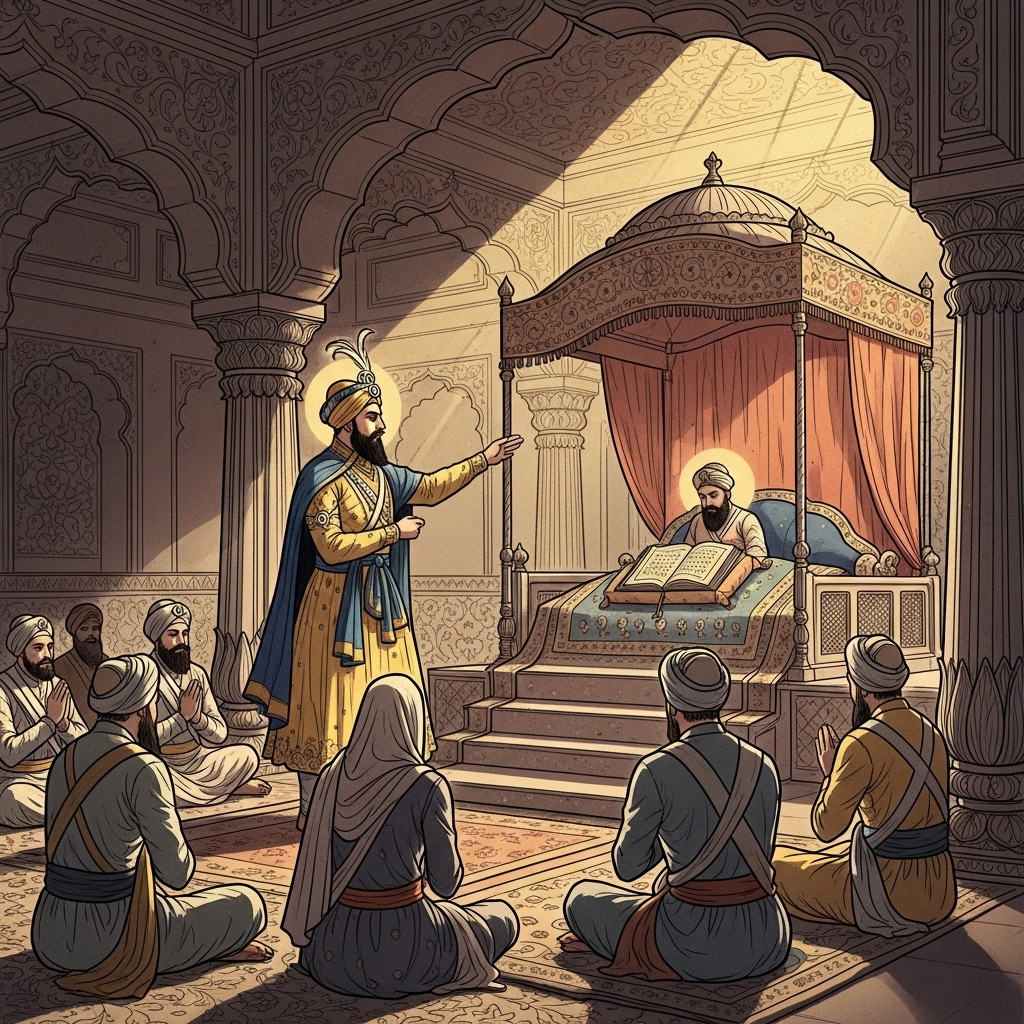👑 1708 — The Light Merges: Guru Gobind Singh Ji's Final CommandmentThe Tenth Master, Guru Gobind Singh Ji, passed the eternal Guruship to the Guru Granth Sahib before departing the world.

In 1708, a profound transition took place that would forever define the Sikh faith and its future. Following an assassination attempt in Nanded, Guru Gobind Singh Ji knew his earthly journey was concluding. He gathered the Sikhs, placed a coconut and five coins before the Adi Granth, and bowed to it, formally passing the mantle of leadership. He declared the sacred scripture the eternal Guru for all Sikhs, henceforth to be known as the Guru Granth Sahib. This act was revolutionary. It ended the line of human Gurus and democratized spiritual authority, ensuring the Guru's wisdom was accessible to all and preserved for all time. The Guru Granth Sahib became the living embodiment of the Ten Gurus' light and teachings. This moment wasn't an end, but a new beginning, entrusting every Sikh with direct access to the Guru's divine guidance.
|